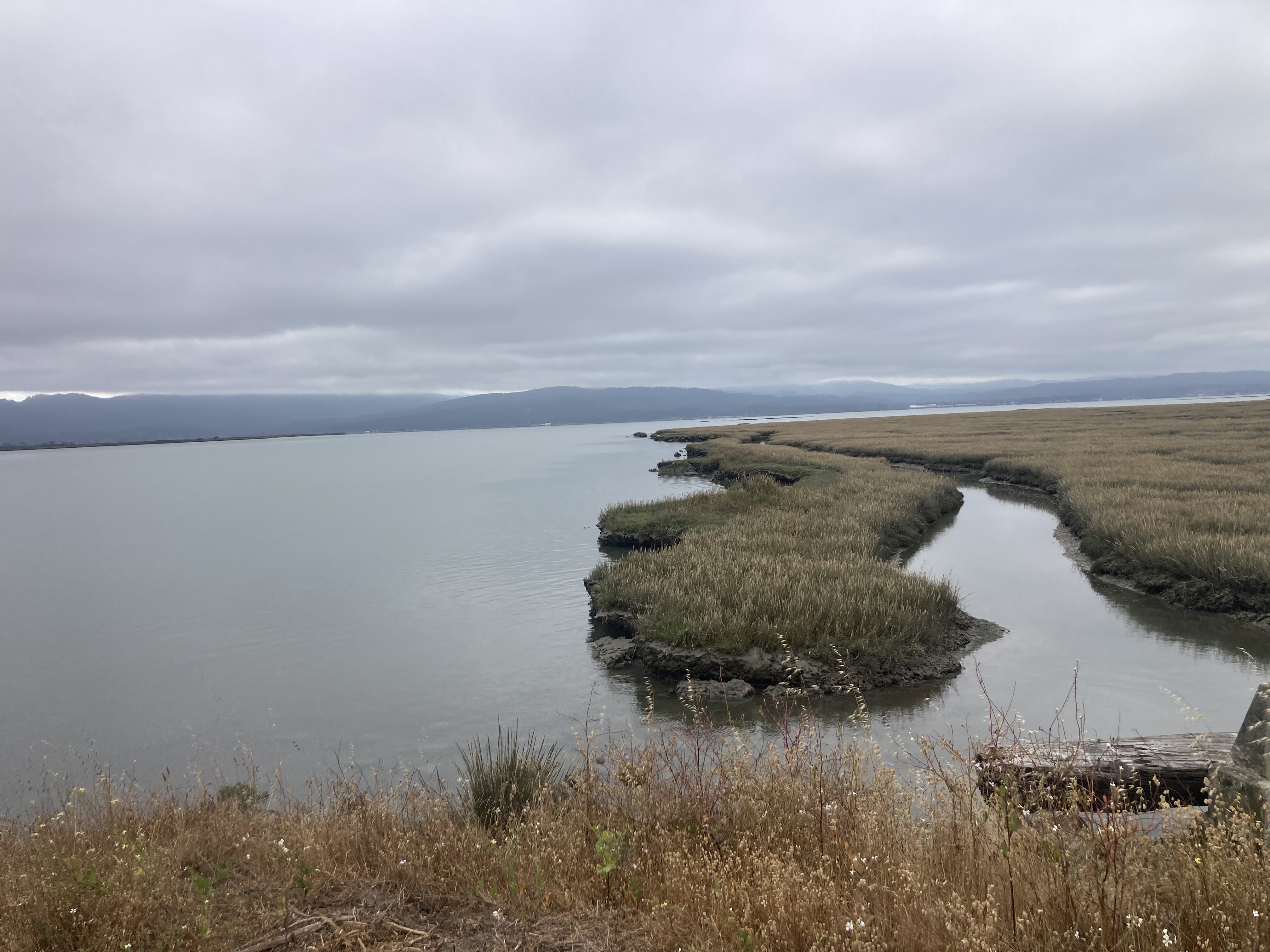Gregg Gets Mad
Contact
University of Arkansas System Division of Agriculture
Cooperative Extension Service
2301 S. University Ave.
Little Rock, AR 72204

Gregg Gets Mad
A while back, I went through my “salvia phase.” It was a time in the 1990s when several species of salvias were being introduced into the garden world and I decided to try a number of them. A shrubby, bright red one caught my attention. It was called Salvia greggii. Knowing nothing about the plant but its name and that I liked it, I did a little research. As so often happens, it had a connection to Arkansas.
I was reminded of this salvia last week as we crossed California’s Mad River as it dumped into Humboldt Bay, a natural harbor about halfway between San Francisco Bay and the Oregon state line. The river is named after a hissy-fit thrown by Josiah Gregg (1806 - 1850), the merchant, botanist, surveyor and doctor who discovered the little woody salvia I admired.
Gregg was born in Missouri to a farm family, but not cut out for farm work. He was a sickly child with a sharp intellect. As a child, he always liked numbers and learned to estimate the height of a tree by using a transom. Then while still a teen, he taught himself how to survey. He wanted to study medicine but could get no one to take him on as a student because of his sickly ways. Finally, a doctor advised him to relocate to a drier climate such as Santa Fe, which was then part of Mexican territory.
So in 1831, he joined one of the early Santa Fe-bound trading expeditions. Almost miraculously, within two weeks of leaving Independence, Missouri he went from riding as a passenger in one of the wagons to scouting ahead of the slow-moving train and hunting buffalo. Over the next decade, he made the trip several times and became a successful Santa Fe trader. To facilitate his trading he learned Spanish and made one trip deep into Mexico. In 1842 he wrote about his experiences in his classic “Commerce of the Prairies,” a book still in print.
His Arkansas connection is that he must have spent some of his time during the winter months in and around Fort Smith. He was hired by the city fathers of Van Buren to survey and lay out the grid for the original city plan. He blazed a new Santa Fe trading route through Indian Territory, traversing the Texas Panhandle and following the Canadian River valley to Fort Smith.
In early 1845, he finally received the medical training he sought in Louisville, Kentucky. In addition to medicine, he received thorough training in botany, an ancillary field for medical doctors of the time. When the Mexican-American War broke out he joined General John Wool’s Arkansas Volunteers as a guide and interpreter. His first-hand account of the Battle of Buena Vista was widely circulated in the papers of the day.
When the report of gold spread around the world in 1849, Gregg was on the Pacific coast of Mexico in Mazatlan. He sailed to San Francisco and was on the Trinity River by early fall. There he heard rumors of a natural harbor north of San Francisco that could potentially rival that larger bay as a shipping port. Men who claimed this new territory could become wealthy. Even though it was late in the year, he led a group of men across the Coastal Range hunting for the new harbor. When it snowed before they left, the Indian guides who were going to show them the way, along with most of the men in the expedition, save seven, abandoned the quest.
Ill-provisioned and with no tents, they ran out of food. A crossing expected to take eight days dragged on for a month, during which Gregg insisted on gathering data, noting latitude, elevation and other features on the rough survey he was conducting. When they reached the stands of coastal redwoods, he couldn’t resist measuring the diameter and height of the giants, paying little heed to the discontent of his comrades.
Finally, they reached the coast, borrowing some redwood dugouts from a coastal tribe attempting to head to San Francisco. At a river crossing, Gregg insisted on taking some location readings. The men would have none of it, leaving him behind and forcing him to wade after them as they departed. According to the chronicler of the plagued expedition, Gregg “opened upon a perfect battery of the most withering and violent abuse.” Early in the year, Gregg fell off of his mule dead.
Speculation about the cause of his demise and where he is buried persists. He is remembered as a slightly odd but studious observer of the American West during its formative years. Forty-seven plants bear the species epitaph “greggii.”
